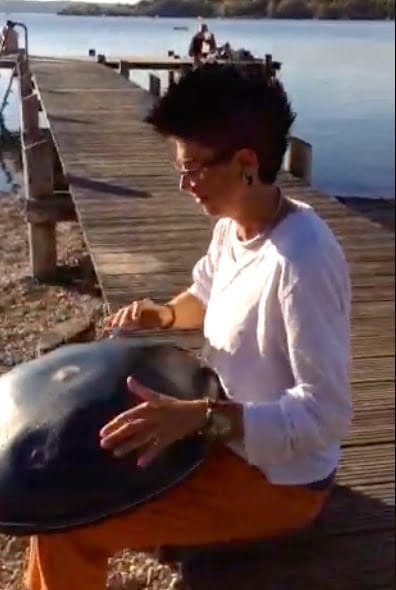
✨ From Oil Drums to Soulful Soundscapes: The Fascinating Story of the Handpan
A sweet little sound UFO with deep roots…
Before the handpan landed in the hearts of intuitive musicians around the world, its rhythmic ancestors had already paved the way—long before anyone shaped a dome with tonefields.
It all started in the late 1930s on the Caribbean island of Trinidad, during Carnival—an explosive celebration of rhythm, rebellion, and resistance. Young Afro-Trinidadian boys, descendants of enslaved people, paraded through the streets of Port-of-Spain, playing music on whatever they could find: metal lids, bamboo sticks, bottles, and tin cans. These were not just sounds—they were stories, protests, emotions, and culture turned into beats.
But where does it get magical?
After hours of pounding on those cans, unexpected dents appeared, and something beautiful happened: different tones emerged. The boys realized they could shape and tune the metal to create specific pitches. What began as noisy rhythm turned into a new form of melodic expression.
By the late 1940s, thin tin containers gave way to sturdy oil barrels—a gift left behind by war and industry. And from this unlikely origin, the Steelpan was born—the only acoustic instrument invented in the 20th century.
The Rise of the Steelpan
Visionaries like Winston “Spree” Simon and Ellie Manette refined the art. Spree started tuning soda drums with a few tones, while Ellie experimented with 45-gallon oil barrels. He reshaped the way the surface was sunk, moving from convex to concave forms, which enhanced tonal clarity and tuning stability.
Soon, more notes were added—entire diatonic octaves—and the instrument evolved from a rhythmic curiosity into a melodic powerhouse. Ellie is also credited with creating the layout that inspired the modern soprano pan (still called “tenor”) and Anthony Williams brought in the spiderweb layout, based on the circle of fifths.
Suddenly, bands weren’t fighting in the streets—they were competing in musical showdowns, leading to the creation of PANORAMA, the legendary steelband competition.

Me with a very old, one of the first Caisa Drums.
So… where does the Handpan come in?
Fast-forward to the early 2000s in Switzerland, where the first Handpan—the Hang® by PANArt—was born, drawing deep inspiration from the steelpan tradition, but crafted for personal connection, healing, and intuitive expression.
This is where my story begins, too.
From the moment I heard a handpan’s sound, it felt like my soul had found its mirror. I wasn’t just playing notes—I was connecting to something ancient and new, wild and tender at the same time. After years of making music, crafting my own intuitive methods, and even inventing my own Graha Handpan, I know this for sure: 💫 The handpan is not just an instrument. It’s a portal.
To your inner world. To peace. To creativity without rules.
Whether you’re drawn to its history, its healing resonance, or the way it invites you to just play, I invite you to keep reading and exploring this blog…
Because the story of the Handpan is still being written.
And maybe, just maybe—you’re part of it.
Verfasser/in:
Doña Barça

Let's Play & Flow with me.
💖 1:1 Handpan Coaching – 30 or 60 Minutes of Intuitive Free Play Support 🌿
